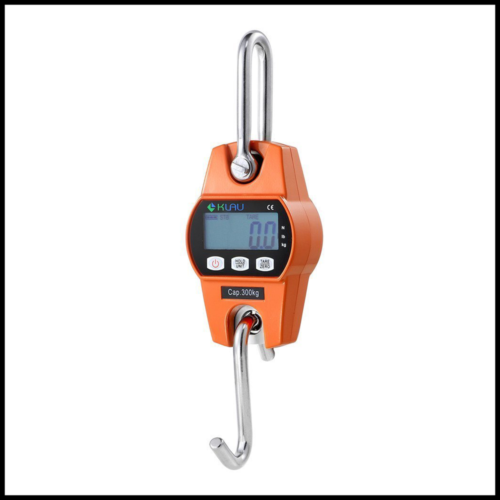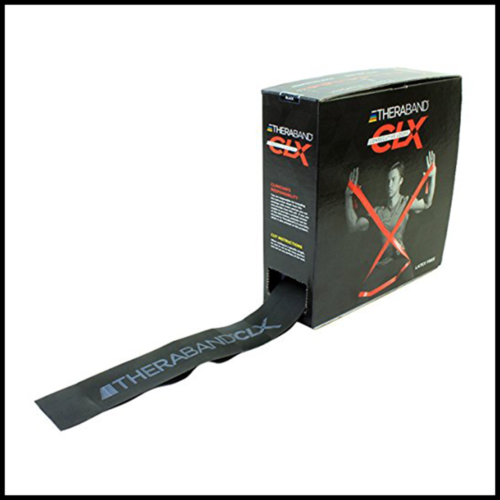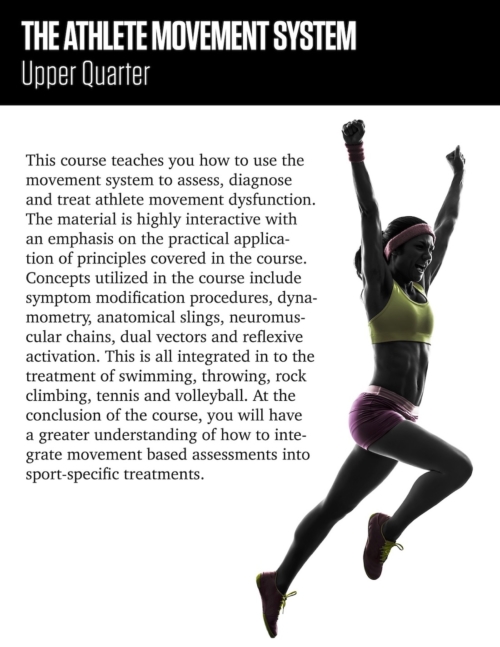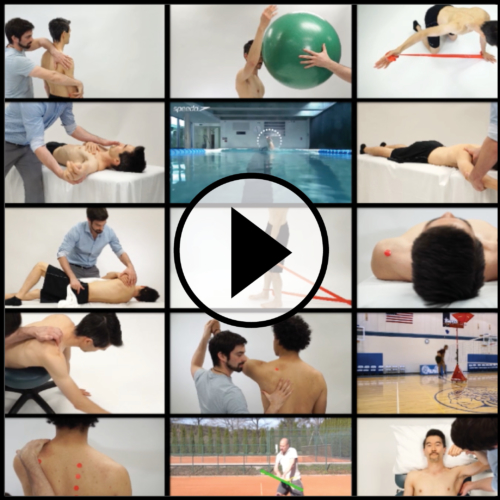-
 This course will teach you how to identify movement patterns, faulty alignment, and muscle imbalances in the lumbar spine by analyzing patient movement. You will learn how to use components of the movement system to classify patients with mechanical low back pain. Based on movement classifications, you will utilize corrective exercises to restore normal patient movement.
This course will teach you how to identify movement patterns, faulty alignment, and muscle imbalances in the lumbar spine by analyzing patient movement. You will learn how to use components of the movement system to classify patients with mechanical low back pain. Based on movement classifications, you will utilize corrective exercises to restore normal patient movement. -
 Package includes: 1 x Klau Mini Weighing Crane Scale 3 x AA Batteries Specs: Superb Quality: OIML R76, GB/T11883-2002 and ISO9001-2000 certified quality system. Great Safety: Quality stainless steel load receptor and an aluminum die-casting case for better safety. Newest Design: 0.79 inch LCD display with backlight with a visual distance over 10m.
Package includes: 1 x Klau Mini Weighing Crane Scale 3 x AA Batteries Specs: Superb Quality: OIML R76, GB/T11883-2002 and ISO9001-2000 certified quality system. Great Safety: Quality stainless steel load receptor and an aluminum die-casting case for better safety. Newest Design: 0.79 inch LCD display with backlight with a visual distance over 10m. -

- Daisy chain loops perfect for sport specific movements
- Enables workouts such as simultaneous upper and lower body exercises and additional resistance for dumbbell training with the functionality and portability of a traditional resistance band
- Non-Latex CLX with no scent and no powder
- A variety of resistance level options with varied band colors ranging from 2.4 lbs to 21.3 lbs
-
 This course is a recording of a previously hosted live webinar event. Polling and question submission features are not available for this recording. Format and structure may differ from standard MedBridge courses. This course teaches you how to use the movement system to assess, diagnose and treat athlete movement dysfunction. The material is highly interactive with an emphasis on the practical application of principles covered in the course. Concepts utilized in the course include symptom modification procedures, dynamometry, anatomical slings, neuromuscular chains, dual vectors and reflexive activation.nt.
This course is a recording of a previously hosted live webinar event. Polling and question submission features are not available for this recording. Format and structure may differ from standard MedBridge courses. This course teaches you how to use the movement system to assess, diagnose and treat athlete movement dysfunction. The material is highly interactive with an emphasis on the practical application of principles covered in the course. Concepts utilized in the course include symptom modification procedures, dynamometry, anatomical slings, neuromuscular chains, dual vectors and reflexive activation.nt. -
 This continuing education course is a recorded webinar hosted on the Medbridge platform. This course incorporates biomechanical, movement, and sport-specific based assessments to analyze and treat the lower quarter athlete. Concepts utilized in the course include relative flexibility, quality and timing of muscle contraction, dynamometry, closed kinetic chain muscle testing, speed of force generation, cross-body assessments, anatomical slings, neuromuscular chains, dual vectors, and reflexive activation. After the course, you will have a greater understanding of how to integrate clinical movement-based assessments into sport-specific treatments.
This continuing education course is a recorded webinar hosted on the Medbridge platform. This course incorporates biomechanical, movement, and sport-specific based assessments to analyze and treat the lower quarter athlete. Concepts utilized in the course include relative flexibility, quality and timing of muscle contraction, dynamometry, closed kinetic chain muscle testing, speed of force generation, cross-body assessments, anatomical slings, neuromuscular chains, dual vectors, and reflexive activation. After the course, you will have a greater understanding of how to integrate clinical movement-based assessments into sport-specific treatments. -

- Daisy chain loops perfect for sport specific movements
- Enables workouts such as simultaneous upper and lower body exercises and additional resistance for dumbbell training with the functionality and portability of a traditional resistance band
- Non-Latex CLX with no scent and no powder
- A variety of resistance level options with varied band colors ranging from 2.4 lbs to 21.3 lbs
-
 Use this code to receive a discounted rate : TheClimbingDoc This continuing education course is hosted on the Medbridge platform. It will utilize the movement system as a framework to assess the biomechanics of throwing. You will learn how to classify scapular, humeral, and thoracic movement patterns as they relate to observation range of motion. You will then advance your movement assessment skills by learning the biomechanics and critical events of a throw. Based on your movement observations and biomechanics knowledge, you will then learn how to classify movement dysfunction and provide sport-specific treatments to correct inefficient movement.
Use this code to receive a discounted rate : TheClimbingDoc This continuing education course is hosted on the Medbridge platform. It will utilize the movement system as a framework to assess the biomechanics of throwing. You will learn how to classify scapular, humeral, and thoracic movement patterns as they relate to observation range of motion. You will then advance your movement assessment skills by learning the biomechanics and critical events of a throw. Based on your movement observations and biomechanics knowledge, you will then learn how to classify movement dysfunction and provide sport-specific treatments to correct inefficient movement.





